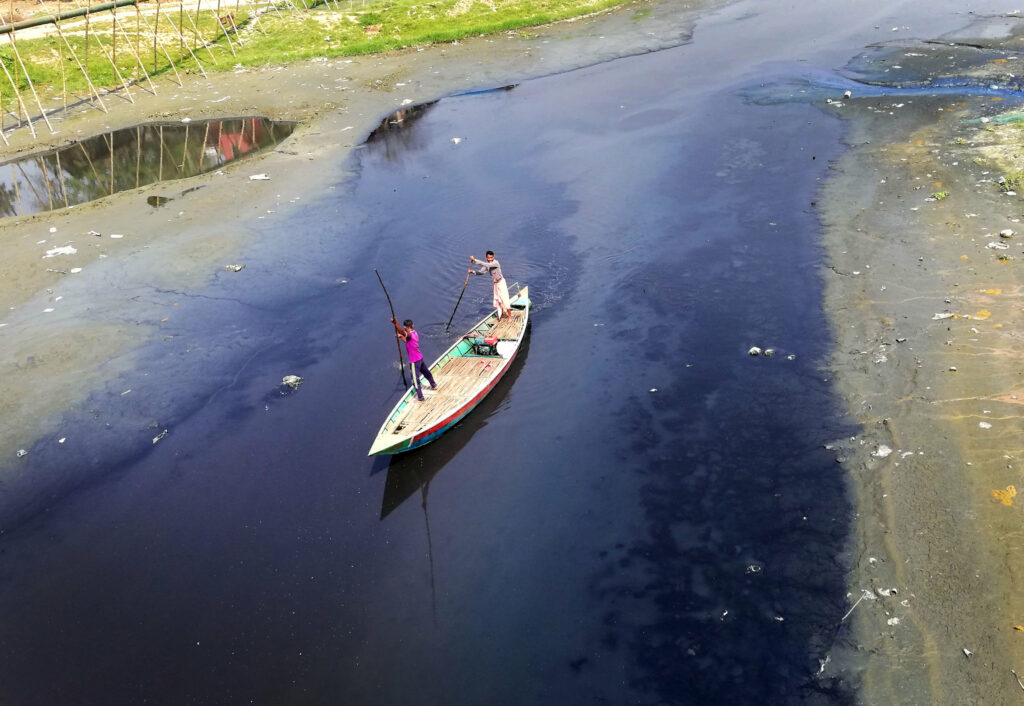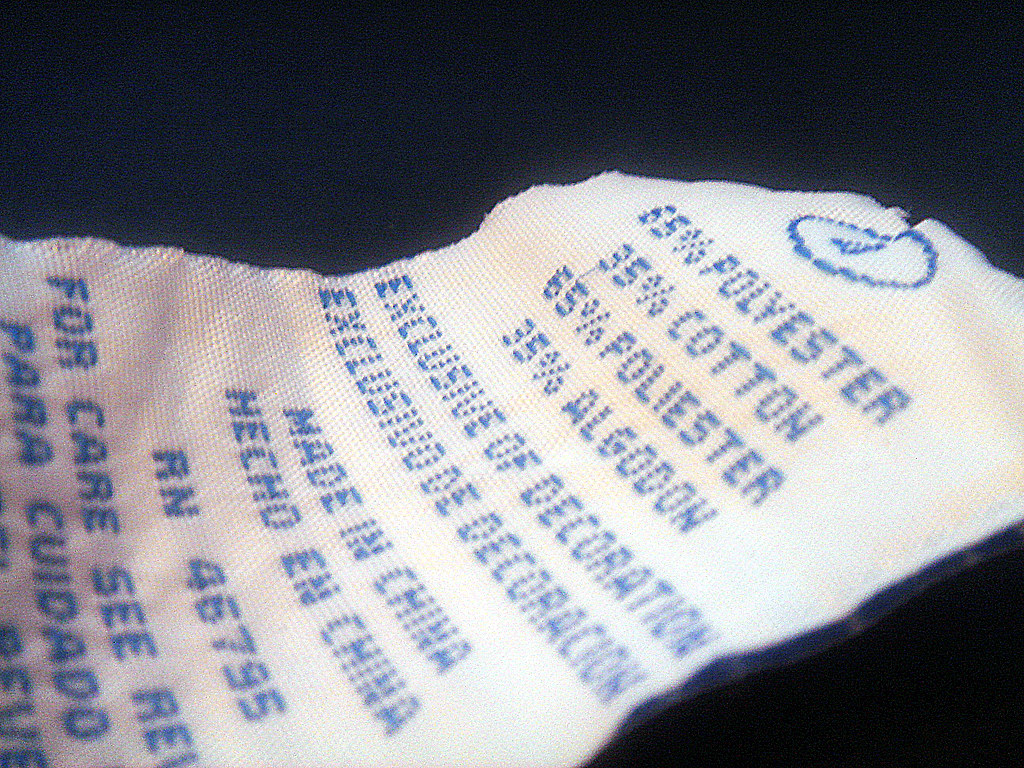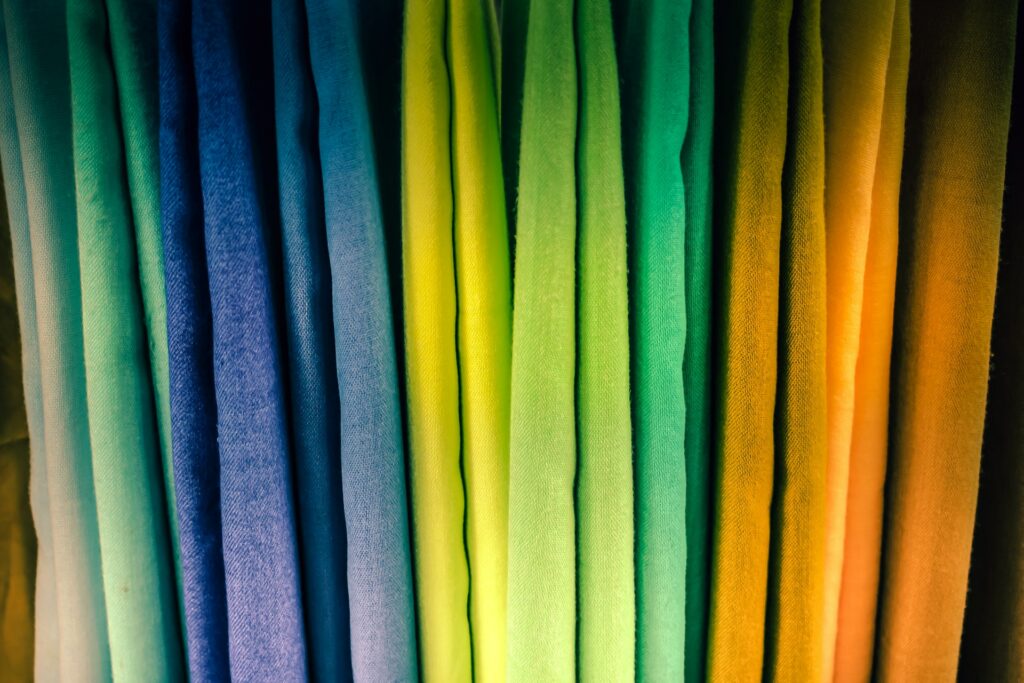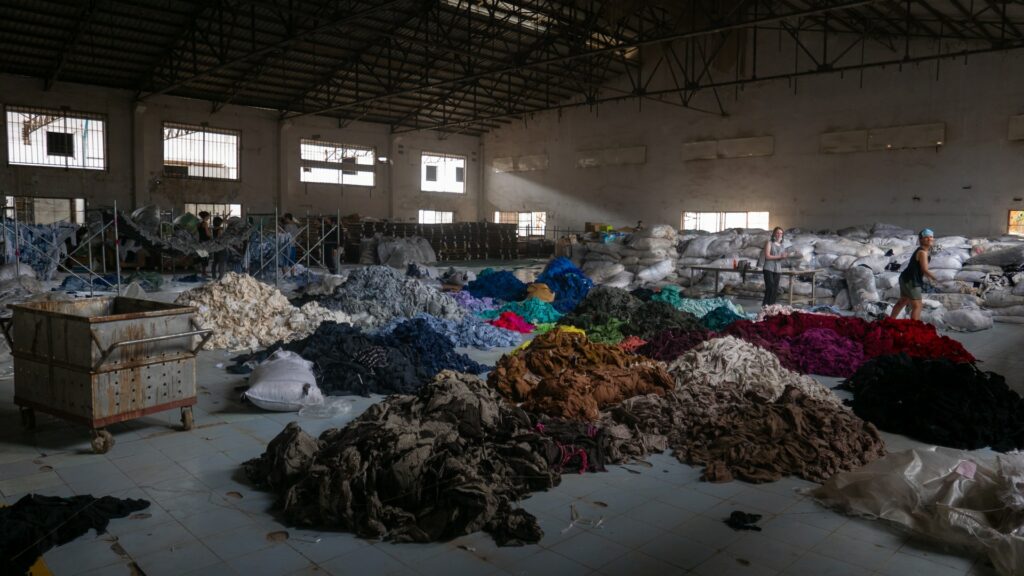The fashion industry creates as much as 8% of global greenhouse gas emissions, guzzles water and causes widespread pollution.

How does the making of our clothes damage the planet?
The manufacturing of clothes has a heavy impact on the planet.
For example, synthetic polymer polyester (which is used in more than half of our clothes) is made from fossil fuels, contributing to the climate crisis.
Cotton requires a huge amount of water to produce – a kilo (the amount of cotton in a pair of jeans) needs up to 10,000 litres, which is about a decade’s worth of drinking water for a single person.
Fabrics like viscose are made from wood pulp – globally, 70 million tons of trees are cut down to meet this demand, a figure expected to double by 2034.
Chemicals used in manufacturing processes are also damaging to water bodies. Dyes, for example, create up to 20% of global industrial water pollution.

What happens after our clothes have been used?
At the end of their lifecycle, clothes continue to damage to the environment. The vast majority of items are incinerated or thrown out to landfill sites.
As synthetic fabrics break down, they release methane, a greenhouse gas.
Polyester sheds microplastics during washing and while breaking down in landfill sites, entering rivers and oceans as plastic pollution that can be harmful to wildlife.

Who’s to blame?
Fast fashion has certainly made things worse, but the whole fashion industry, from high end to high street, is responsible for its impact on the planet.

What’s the fix?
As consumers, the simplest thing we can do is buy less. All new clothes have an impact, even those produced by brands that market themselves as sustainable.
Reassessing how much we buy helps to slow the cycle and reduce the industry’s impact on the world. Moving away from fast fashion is key – read our explainer here.
From the top level, governments need to introduce legislation that pressures companies into adopting less impactful practises – for example, by taxing virgin plastics (which includes polyester).

How to reduce fashion’s environmental impact
- Buy second-hand from vintage, thrift and charity shops.
- Organise a clothes swap with friends.
- Renting occasion wear is a great way to cut waste.
- Washing clothes only when they need cleaning helps them last longer, reduces microplastic shedding and saves water.
- Need to Marie Kondo your wardrobe? Check out our guide on how to clear out your closet without sending clothes to landfill.
- When you do need to buy new clothes, support ethical brands that are open about their manufacturing processes.
- Look for natural fabrics and those made from recycled materials, cottons that are organic or regenerative, and natural dyes.

Sources
BBC, Can fashion ever be sustainable?
Bloomberg, The Global Glut of Clothing Is an Environmental Crisis
Columbia Climate School, Why Fashion Needs to Be More Sustainable
Harvard Business Review, The Myth of Sustainable Fashion
UN Climate Change, UN Helps Fashion Industry Shift to Low Carbon
UN Economic Commission for Europe, UN Alliance aims to put fashion on path to sustainability

